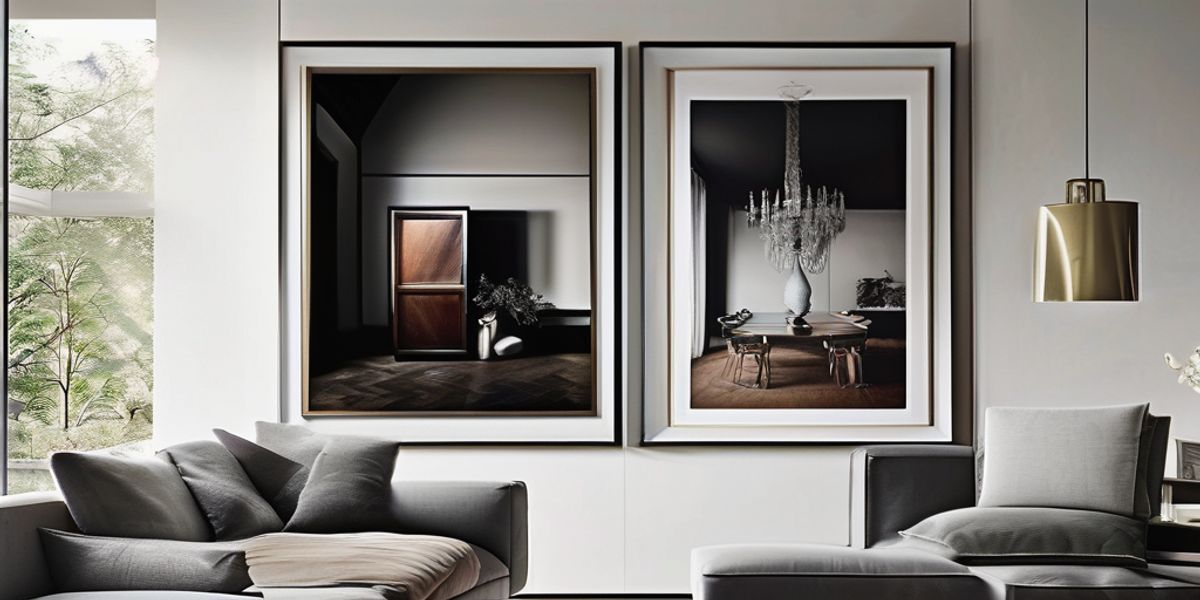Decorating your home with still life art can transform mundane spaces into visually captivating environments. This article explores various ways to style your home using still life artworks, from choosing the right pieces to displaying them effectively. Whether your home decor style is modern, rustic, or eclectic, still life art can enhance your living spaces with its unique charm and aesthetic appeal.
Key Takeaways
- Understand the importance of matching still life art with the room’s purpose and color schemes.
- Explore how different home styles can be complemented by specific types of still life artworks.
- Learn the best practices for framing, arranging, and lighting still life art to maximize its impact.
- Discover how seasonal themes can be incorporated into still life art to keep your decor fresh and relevant.
- Recognize the potential of still life art to create interactive, engaging spaces through strategic placement and sensory elements.
Choosing the Right Still Life Art for Your Space
Consider the Room’s Purpose
Identify the function of the room to determine the mood you want to set with still life art. For instance, a calming scene might be perfect for a bedroom, while a vibrant, energetic piece could enhance a home office or living area.
Selecting Art by Color Scheme
Choose art that complements or contrasts with your room’s color palette. This can create a harmonious or striking visual impact. Consider using a color wheel to find complementary colors that will enhance the overall aesthetic of your space.
Understanding Art Sizes and Placement
The size and placement of still life art can dramatically affect a room’s appearance. Here are some tips:
- Choose a size that balances with the wall space and furniture scale.
- Hang art at eye level for optimal viewing.
- Consider groupings of smaller pieces to create a gallery effect.
Incorporating Still Life into Various Home Styles
Modern and Minimalist
In modern and minimalist homes, still life art should focus on simplicity and clean lines. Choose pieces with a limited color palette and abstract forms to complement the sleek design of the space. This style benefits from art that doesn’t overwhelm the senses but rather enhances the existing aesthetic.
Rustic and Farmhouse
For rustic and farmhouse styles, still life art often features natural motifs such as fruits, flowers, or countryside scenes. These pieces should have warm tones and traditional frames to match the cozy, inviting atmosphere of the home. Incorporating vintage or handcrafted frames can add an authentic touch to the artwork.
Eclectic and Bohemian
Eclectic and Bohemian spaces thrive on the unique and colorful. Still life art in these environments should be vibrant and possibly include mixed media elements. Think of using pieces that incorporate textiles or unconventional materials to add texture and interest. This approach not only decorates the space but also turns it into a stimulating visual experience.
Framing and Displaying Still Life Art
Choosing the Right Frame
Selecting the perfect frame for your still life art can transform its overall appearance and how it complements your space. Consider the style of the frame, its material, and how it interacts with the art itself. For instance, a sleek, minimal frame might suit a modern interior, while a more ornate, wooden frame could enhance a traditional setting.
Wall Arrangement Ideas
Arranging your still life art effectively on walls can create a visually appealing display. Consider symmetrical or asymmetrical arrangements, or even a gallery wall. Here’s a simple guide to get you started:
- Start with the largest piece.
- Balance with smaller pieces around it.
- Maintain consistent spacing between frames.
Protecting Your Artwork
To ensure the longevity of your still life art, it’s crucial to protect it from environmental factors. Keep your artwork away from direct sunlight and moisture to prevent damage. Additionally, using archival quality materials for framing can help preserve the art’s condition over time.
Lighting Techniques for Still Life Displays
Natural vs. Artificial Lighting
Choosing the right type of lighting can dramatically affect the appearance and mood of your still life art. Natural lighting often provides a soft, diffused look that is perfect for highlighting the subtle details and colors in still life pieces. On the other hand, artificial lighting allows for more control and can be adjusted to create specific effects or emphasize certain aspects of the art.
Highlighting Key Elements
Effective lighting should enhance the focal points of still life art. Use directional lighting to draw attention to the most important elements, ensuring they stand out. This technique helps in creating a visual hierarchy in the artwork that guides the viewer’s eye through the composition.
Creating Mood with Lighting
The lighting setup can also play a crucial role in setting the mood of a room. Soft, warm lights can create a cozy and inviting atmosphere, while bright, harsh lights might lend a more dramatic and intense feel to the space. Experimenting with different intensities and angles can help achieve the desired ambiance.
Seasonal Themes in Still Life Art
Spring and Summer Motifs
Spring and summer bring vibrant colors and light, which can be reflected in your choice of still life art. Opt for pieces that feature blooming flowers, fresh fruits, or bright outdoor scenes to inject a sense of renewal into your home. This is a perfect time to rotate artwork to match the season’s energy.
Autumn and Winter Themes
As the seasons shift to cooler tones, so should your art. Autumn and winter themes often include rich, warm colors and motifs such as fallen leaves, pumpkins, and snowy landscapes. This seasonal shift in your art collection can create a cozy atmosphere that complements the weather outside.
Transitioning Art with Seasons
To keep your home decor dynamic and engaging, consider rotating your still life art with the changing seasons. This not only keeps your decor fresh but also allows you to highlight seasonal themes and celebrate the passage of time. It’s a simple yet effective way to continually renew the ambiance of your space.
Interactive Spaces with Still Life Art
Creating Focal Points
Creating focal points with still life art involves strategic placement to draw attention and guide the viewer’s eye. Consider the scale and impact of the artwork to ensure it commands the desired attention in a room.
Engaging the Senses
Still life art isn’t just a visual delight but can also engage other senses. Think about incorporating elements that suggest texture or scent, like paintings of fruits or flowers, to enhance the sensory experience of a space.
Art in Functional Spaces
Incorporating still life art in functional spaces such as kitchens or bathrooms can add an unexpected artistic touch. Use smaller pieces that complement rather than overwhelm the space. This approach not only beautifies the area but also makes art a part of everyday life.
Mixing Media and Textures in Still Life Art
Combining Different Art Forms
Incorporating various art forms into your still life compositions can unleash your creativity and add depth to your home decor. Experiment with combining traditional paintings with digital elements or sculptures to create a unique visual experience.
Texture Contrasts
Highlight the tactile quality of artworks by juxtaposing smooth and rough textures. This contrast not only enhances the visual appeal but also invites viewers to engage more closely with the art.
Using Mixed Media to Enhance Decor
Mixed media art can transform a room by adding layers of complexity and intrigue. Use a combination of materials like metal, glass, and textiles to bring a dynamic and textured look to your still life displays.
Conclusion
Incorporating still life art into your home decor is a timeless and versatile way to enhance the aesthetic appeal of your living space. Whether you choose to create a focal point in your living room with a large, vibrant piece, add a touch of elegance to your dining area, or bring a calming influence to your bedroom, still life art offers endless possibilities for personal expression and style. By following the tips and ideas discussed in this article, you can effectively select and arrange still life artworks that reflect your personal taste and complement your home’s overall design.
Frequently Asked Questions
How do I choose the right still life art for my living room?
Consider the room’s purpose and color scheme, and select artwork that complements these elements while enhancing the overall ambiance.
What are some tips for incorporating still life art in a minimalist home?
Opt for simple, bold pieces that stand out without overwhelming the space. Use clean, sleek frames and consistent color palettes.
How should I frame my still life art?
Choose frames that complement both the artwork and the room’s decor. Consider the style and material of the frame to ensure it enhances the art.
What lighting is best for displaying still life art?
Natural light is ideal, but if unavailable, use soft artificial lighting to highlight key elements of the art without causing glare.
Can I use still life art in a rustic decor style?
Absolutely! Choose still life pieces with earthy colors and natural motifs to complement the rustic theme.
How can I make my still life art a focal point in the room?
Place the art at eye level in a central location, use lighting to draw attention, and consider surrounding it with minimal decor to emphasize the piece.

